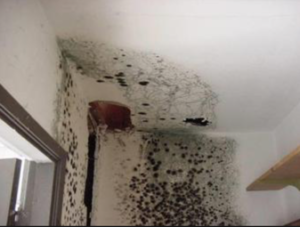Types of Construction Defects
Confused about construction defects? The following guide will run you through the various types, common problems, and whether you need to seek legal counsel.
A construction defect can result from flaws in the product itself, how something is installed, designed, maintained, or operated. Some construction defects can be seen immediately, such as burst water pipes, and some can appear over time, such as a foundation that is slowly shifting. It’s important to understand the potential types of construction defects, as it can help you in identifying the likely culpable party or parties.
Design Deficiencies
These deficiencies are related to the failure on the part of the engineers or architect while developing the system or building. For example, a faulty roof design which leads to poor drainage, inadequate structural support, and water penetration. 
Material Deficiencies
These deficiencies are associated with damaged or defective building materials, inferior products that have a lower lifespan than expected, such as window frames that were bent during transit and cannot be adequately installed and lead to water intrusion.
Construction Deficiencies
Construction deficiencies are failures due to poor quality workmanship, resulting in a wide range of damages. An example would be faulty plumbing work that causes leaks which lead to damage in electrical wires or mold growth.
Operational and Maintenance Deficiencies
These deficiencies are related to the homeowner failing to maintain or use the structure properly, such as not maintaining an exterior sealant, leading it to break down and leak water. Another example would be a homeowner that keeps the temperature on their HVAC too low during the winter season and causes the pipes to freeze.
Common Construction Defects
● Leaks in the facade: Architects are getting more unique and creative with their designs, which can often lead to having exterior and window facade problems. A lot of newer houses were built with complex curtain wall systems, which look great but are comprised of hundreds of smaller pieces. If a few of the pieces fail due to improper installment, water filtration issues appear.
● Window leaks: Most window leaks are due to faulty installation. It’s important that professionals install your windows and that you clean your gaskets and seals at least once a year to stop drafts and leaks from developing.
● Problems with wooden floors: Natural wood will expand and contract over time, so it’s important that wooden flooring is acclimated to the building site before installation. If wooden flooring is installed while it’s damp, then gaps can develop over time, leading to moisture accumulation and mold.
● Exhaust or ventilation problems: Some ventilation issues can come from incomplete or clogged duct systems. If you are worried about ventilation in your home, then you can get a test that evaluates the air flow.
Claims Against Developers and Builders
If the developer or builder commits fraud, misrepresents material information, is negligent or breaches the contract, the homeowner can start a claim against them. A statute of limitations does exist in these allegations, limiting the time in which a construction defects claim can be brought against new home developers and builders.
If you believe that you have a claim against a builder due to a construction defect, check with a construction law attorney to find out what the statute of limitation is in your state, as the law is different from state to state. Latent defects are considered when the defect has been discovered after you’ve purchased your home and typically the time limit to assert a latent defect claim is around ten years from the time the problem was discovered.

